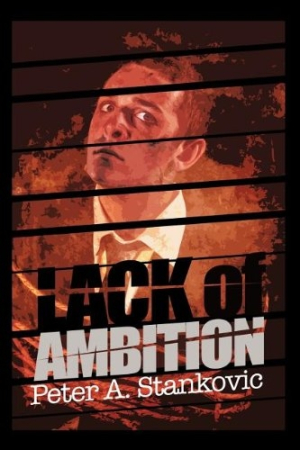Lack of Ambition
This novel’s staccato storytelling keeps the reader in suspense and wondering how the parallel plotlines will reveal the motivations of the story’s troubled leading man.
Lack of Ambition is the tale of an everyman who refuses to surrender to the wealthy and powerful, using violence and torture to avenge a family tragedy. A critique of the far-reaching consequences of corporate greed and immorality, Lack of Ambition raises hard questions about justice and revenge, but it has trouble marrying all the elements of a fast-paced thriller.
The daily routine of Easy Insurance Company in Sydney, Australia, has been interrupted. Armed intruders kidnap the company’s top executives, sending the police on a scramble for the perpetrators. Over the next eighteen days, these men and women are subject to imprisonment, interrogation, and torture. The motive behind the brazen midday attack is vengeance by a mysterious man seeking to punish those responsible for the demise of his family.
Lack of Ambition is cinematic in its telling, sweeping from chapter to chapter in quick-fire fashion to introduce scenes and characters with a leading camera. This staccato storytelling keeps readers in suspense and wondering how the parallel plotlines and auxiliary characters will converge and reveal the true motivations of the story’s troubled leading man. The story is reminiscent of the fast-paced, no-nonsense style of a Raymond Chandler novel, but without the biting dialogue or descriptive brevity.
The elements of a gripping tale are apparent but disjointed; the characters are typical and shallow. Protagonist JJ is motivated by heartbreak, but the author doesn’t develop the man’s emotional depth enough for the reader to feel his pain. The novel’s female characters seem included merely for adornment; even JJ’s squeeze and accomplice, Angela, is lauded more for her beauty than developed as an intriguing secondary character with complex motivations.
Often, communication between characters is recounted in summary, which could be translated into compelling banter if presented as dialogue. A scene between JJ and Angela represents this tendency to summarize: “As a bonus she wanted to help him with a plan that would have made many women nervous. She did not think he was a nutcase because of his desire to address a past wrong by engaging in an extreme form of revenge. Instead she listened attentively and even came up with a few suggestions.”
At its heart, Lack of Ambition is intended as a fast-paced thriller, but more attention to the story’s key points of action would have better achieved this goal. As written, the narrative’s momentum breaks down when the author provides backstory. For example, the narrative leaves a scene in which a victim is being tortured to describe a board meeting. The novel would also benefit from a smaller cast of characters to crystallize and heighten tension and mystery. For instance, at the novel’s start, we are introduced to JJ’s plans through a short-lived romance with a character who essentially disappears from the story; this plot element is told from the woman’s perspective, but it should have been told from the perspective of a character who is more present in the novel.
Readers with experience in the corporate world will no doubt recognize the cutthroat setting in Lack of Ambition and will likely find the author’s interpretation of this environment entertaining.
Reviewed by
Shelley Mae Hazen
Disclosure: This article is not an endorsement, but a review. The publisher of this book provided free copies of the book and paid a small fee to have their book reviewed by a professional reviewer. Foreword Reviews and Clarion Reviews make no guarantee that the publisher will receive a positive review. Foreword Magazine, Inc. is disclosing this in accordance with the Federal Trade Commission’s 16 CFR, Part 255.

